Water: how much—and which kind—do you need?

Samara Doole - unsplash.com.
“Keep your body deeply hydrated.” “Soothe soreness.” “Amp energy.” “Stay balanced.” “Replenish lost electrolytes.” “Neutralize acid.”
The bottled water aisle isn’t what it used to be. Companies make it sound like drinking ordinary water would leave you weak, exhausted, and dehydrated. Here’s a primer on how much water is enough. Keep reading for the lowdown on fancy (and pricey) waters.
How much water do you need?
“You’d think we’d have a one-sentence answer,” says Colleen Muñoz, assistant professor of health sciences at the University of Hartford. “But it’s much more complicated.”
The usual advice to drink eight 8 oz. glasses of water a day—the 8-by-8 rule— seems daunting. But it was never about water alone.
“The National Academy of Medicine now recommends about 9½ cups a day for women and about 12 cups a day for men,” notes Sam Cheuvront, a physiologist at the U.S. Army Research Institute of Environmental Medicine. “That includes all fluids: coffee, tea, juice, milk.” (It doesn’t include the two to three cups of liquid you’re likely to get from your food.)
In fact, that’s how much the average adult consumes (which influenced the Academy’s advice). Exception: people over 70 average only about 7 cups a day.1
But the advice is just a rule of thumb. How much you need depends on how much you lose. What may matter:
Heat or exercise. Heat or physical activity boosts your fluid needs.
“It’s not just sweat,” says Cheuvront, who notes that his views are not official U.S. Army or Defense Department policy.
“Heat or exercise also increases the water that’s lost through breathing and the water that evaporates from the skin.”
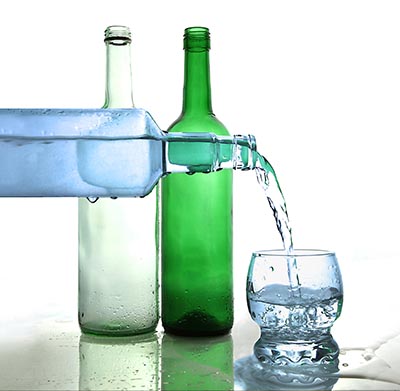
Diet. “If you eat a lot of salt or protein, your kidneys need more water to excrete the excess,” says Cheuvront. “So the more meat and high-sodium restaurant food and processed foods you eat, the more water you need.”
Caffeine. “The general consensus is that moderate caffeine intake doesn’t dehydrate you,” says Muñoz.
In one study (funded by an industry-backed foundation), researchers randomly assigned 59 young men to get roughly 450, 225, or 0 milligrams of caffeine per day.2 (A Starbucks grande Pike Place Roast has around 300 mg.) After five days, “there was no difference in hydration markers measured over 24 hours,” says Muñoz.
Alcohol. “Alcohol turns down a hormone that tells the kidneys to retain fluid,” Muñoz explains, so it’s a diuretic.
“If you drink alcohol, try to drink more water than you normally would,” she suggests.
Older age. “To say that we don’t have a good understanding of hydration needs in older people is an understatement,” says Muñoz.
But some changes are well documented, she notes. For example, “older people aren’t able to concentrate urine as well.” That means more trips to the bathroom.
What’s more, the sensation of thirst gets weaker in older people, so they don’t always realize when they need to drink fluids.
“And older adults are often taking a variety of medications that increase or decrease their fluid needs,” adds Muñoz.
How can you tell if you’re getting enough fluid?
Urine color isn’t a perfect measure of hydration, but it’s useful. The sweet spot, says Muñoz: “the color of lemonade.” (If your urine is colorless, you could be overhydrated.)
For a more systematic approach, you can check what Cheuvront calls the WUT criteria first thing in the morning:3
Weight: Down more than 1 percent from your average morning weight.
Urine color: “Apple juice or darker.”
Thirst: “Not just a dry mouth, but so dry that it’s hard to form saliva.”
“If two of these criteria are present, it’s likely that you’re not getting enough water,” says Cheuvront. “If all three are present, you’re almost definitely dehydrated.”
References
1BMC Public Health 13: 1068, 2013.
2Int. J. Sport Nutr. Exerc. Metab. 15: 252, 2005.
3J. Am. Coll. Nutr. 35: 185, 2016.
Protein Water
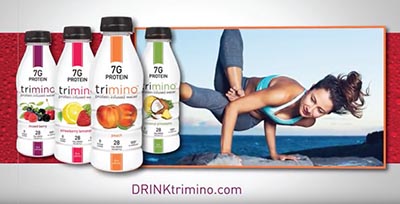
What it is: Water with added whey protein isolate.
Claim: “This low calorie protein drink maintains and replenishes muscle, increases energy & endurance, curbs appetite, and provides hydration,” says Trimino.
Evidence: “That’s quite a claim for the amount of protein that’s in only one ounce of chicken breast,” says the Army Research Institute of Environmental Medicine’s Sam Cheuvront. Each 16 oz. bottle of Trimino has just 7 grams.
In an industry-funded study on protein water and hydration, 10 young adults exercised until they were dehydrated and then drank about two liters of water either with or without roughly 40 grams of whey protein isolate. Over the next four hours, they were no better hydrated after drinking protein water than plain water.1
Bottom Line: Extra protein in water doesn’t improve hydration... or pretty much anything else (see "Much of what you've heard about protein may be wrong").
References
Deep Ocean Water
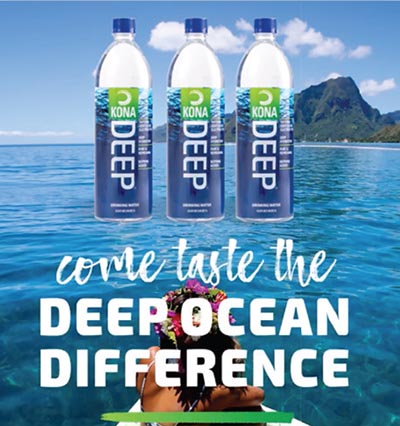
What it is: Desalinated water from a deep ocean current.
Claim: “Kona Deep has a unique blend of electrolytes and trace minerals” that “hydrates you twice as fast as bottled spring water and a leading sports drink,” says the company.
Evidence: Eight young adults exercised until they were dehydrated and then drank Kona Deep water, spring water, or a sports drink.1 The level of particles dissolved in the participants’ saliva returned to normal twice as fast after they drank Kona Deep than after they drank the spring water or sports drink.
But particles in saliva “fluctuate in response to whatever you’re drinking, so they don’t really tell you anything useful about hydration,” says Cheuvront.2
What’s more, he adds, “this study is missing tremendous amounts of details and even plausibility.” That’s because there’s nothing special about Kona Deep’s electrolytes (roughly 2 milligrams of potassium and 45 mg of sodium in a 16.9 oz. bottle).
Bottom Line: Kona Deep is “basically just water,” says Cheuvront.
References
1J. Int. Soc. Sports Nutr. 13: 17, 2016.
2Eur. J. Appl. Physiol. 114: 85, 2014.
Raw Water

What it is: Unfiltered, untreated spring water.
Claim: “Flawless, gem-grade spring water...freely bubbling to the earth’s surface in Maine since the last Ice Age,” says Tourmaline Spring. “Alive” with probiotics, says Live Spring Water (only available in parts of California).
Evidence: If you get your water straight from a spring—or if you take Live Spring Water’s advice about “visiting nature and gathering [y]our own spring water”—you’d be foolish.
“There’s a potential for contamination any time water reaches the surface,” says Glenn Morris, professor of infectious diseases at the University of Florida College of Medicine. “Gorgeous mountain springs or babbling brooks are at risk of carrying disease-causing parasites like Giardia or Cryptosporidium.”
Tourmaline Spring and Live Spring Water provided results showing that they passed safety tests for groundwater (which don’t test for Giardia or Cryptosporidium). But if you’d pay $59.70 for 12 liters of Tourmaline (with shipping), we’re still talking foolish.
Bottom Line: Raw water isn’t worth the price or risk.
Alkaline Water
What it is: Water with a pH above 7. (On the 0 to 14 pH scale, 7 is neutral.)
Claim: “Alkaline water can help neutralize acid in the bloodstream,” says PhURE.
Evidence: No studies have tested whether alkaline water can change the pH of the blood. But it’s unlikely. “Our bodies are really, really good at regulating and maintaining our blood’s pH within a very narrow range,” says Cheuvront.
And drinking alkaline water is unlikely to move the needle, even temporarily. “The average person has roughly 30 to 50 liters of water in their body,” explains the University of Hartford’s Colleen Muñoz. “Drinking a liter of alkaline water is basically a drop in the bucket.”
Nor is alkaline water better for hydration or good for treating acid reflux (see December 2017, "Believe it or not, the latest claims: good science or scams?").
Bottom Line: Your body is perfectly capable of regulating your blood’s pH without an assist from alkaline water.
Hydrogen Water
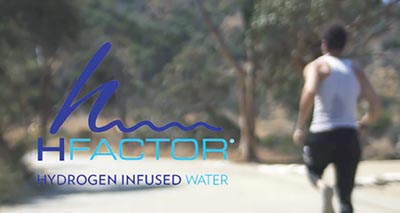
What it is: Water with added molecules of hydrogen.
Claim: “Boosts endurance, minimizes lactic acid, reduces fatigue,” promises Htwo. “Improve athletic performance, reduce inflammation, deliver powerful antioxidants,” boasts HFactor.
Evidence: In one study, researchers gave 10 male soccer players either plain water or hydrogen water for a week before having them cycle on a stationary bike and do knee extensions.1
The hydrogen water had no impact on how much force the players could exert during knee extensions. However, post-workout blood lactate levels were lower after drinking hydrogen water than after drinking plain water.
And in a study that was partly industry funded, eight young female judo athletes had lower post-exercise blood lactate levels if they drank 10 ounces of hydrogen water instead of plain water 30 minutes before exercise.2
But “lactate doesn’t cause fatigue, despite what many people believe,” Cheuvront explains.
In fact, muscle fatigue was no lower when the soccer players drank hydrogen water. (The researchers didn’t measure fatigue in the judo athletes.)
Bottom Line: There’s no good evidence to back up the claims for hydrogen water.
References
1Med. Gas Res. 2: 12, 2012.
2Sci. Sports 31: 207, 2016.
Electrolyte Water
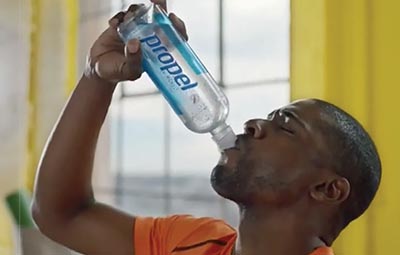
What it is: Water with added electrolytes.
Claim: “Stay balanced with our electrolyte water!” says Whole Foods 365 Electrolyte Water. “Propel Electrolyte Water is made with more electrolytes than any other national water to support next level hydration,” says Propel.
Evidence: “If you want to hold on to fluid, you need to consume electrolytes,” Cheuvront explains. That’s because sodium, potassium, and other electrolytes help keep fluid in your cells and blood.
“If you just consume water, you’ll retain some of it, but you’ll also excrete a lot of it,” he explains.
But for most people, electrolytes are a non-issue.
“There’s no need to consume extra electrolytes until you’ve been doing intense exercise for more than one hour,” says Cheuvront.1
What if you exercise long enough to be drenched in sweat?
“It just so happens that we often consume fluids when we consume food, which has electrolytes,” adds Cheuvront. Problem solved!
At least Propel replaces what you lose in sweat. Many electrolyte waters—like Whole Foods 365—add just a touch of electrolytes for taste. It’s Marketing 101.
Bottom Line: After most exercise bouts, you can replenish your electrolytes with food and plain water.
References
1J. Athl. Train. 52: 877, 2017.
Coconut Water
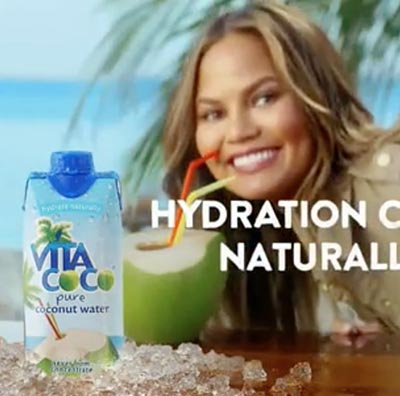
What it is: The liquid inside a young, green coconut.
Claim: “Whether it’s post-workout or post night out, Vita Coco has electrolytes like potassium to help replenish you,” says VitaCoco.com.
Evidence: Vita Coco is a good source of potassium—470 milligrams per cup. That’s a plus, since most people don’t get close to the recommended 4,700 mg a day.
But potassium alone isn’t ideal if you’re in a rush to rehydrate after several hours of exercise.
“You lose far less potassium than sodium in sweat,” says Cheuvront. And coconut water is low in sodium. (That’s a plus for blood pressure, but not for rehydrating.)
In two studies (one funded by Gatorade) on a total of 22 healthy young people, the volunteers drank plain water, coconut water, or a sports drink after exercising in 90º heat until they were dehydrated.
In one of the studies, the volunteers retained slightly more fluid (65 percent) from the coconut water over two hours than from the plain water (59 percent).1 In the other study, there was no difference.2 In both studies, the participants retained 68 percent of the fluid from the sports drink (which contained both sodium and potassium).
For most people, those differences are irrelevant.
“You can also replace those losses with plain old water and a sandwich,” says Cheuvront.
Bottom Line: You don’t need coconut water—or its 45 calories of (naturally occurring) sugar—after a workout.
References
1Southeast Asian J. Trop. Med. Public Health 38: 769, 2007.
2Appl. Physiol. Nutr. Metab. 39: 1167, 2014
Photos: Samara Doole/unsplash.com (top), Studio-Fritz/pixabay.com (bottles and glass), PhotoAlto/stock.adobe.com (woman drinking).

